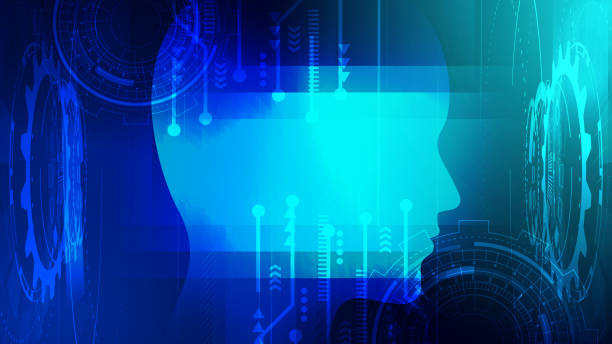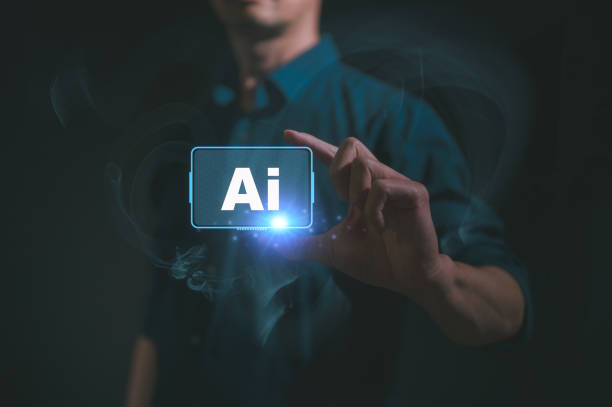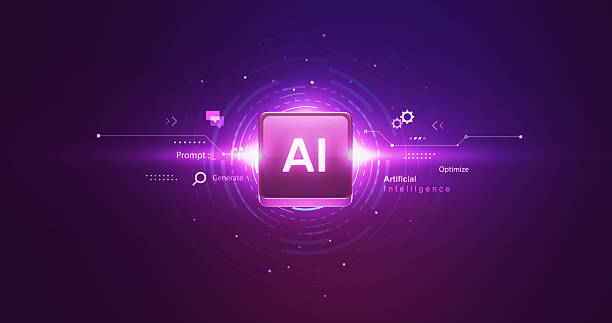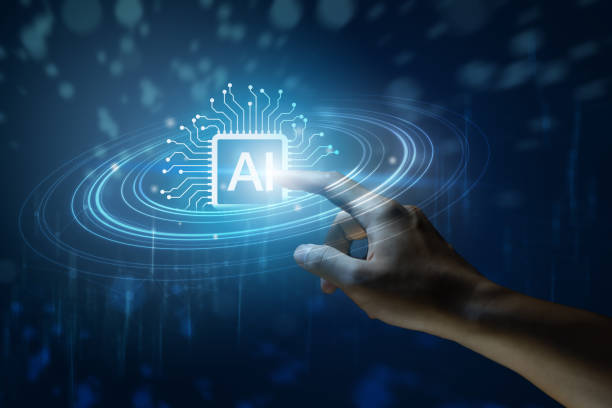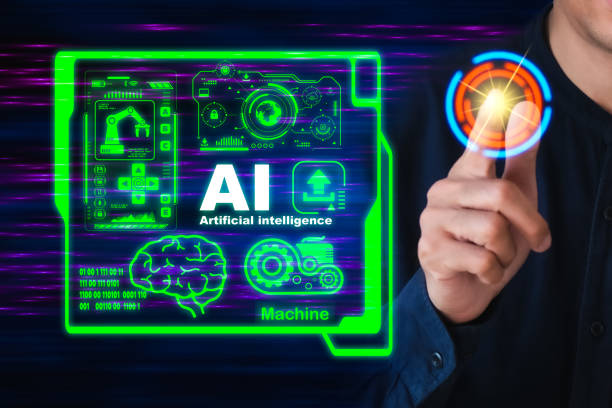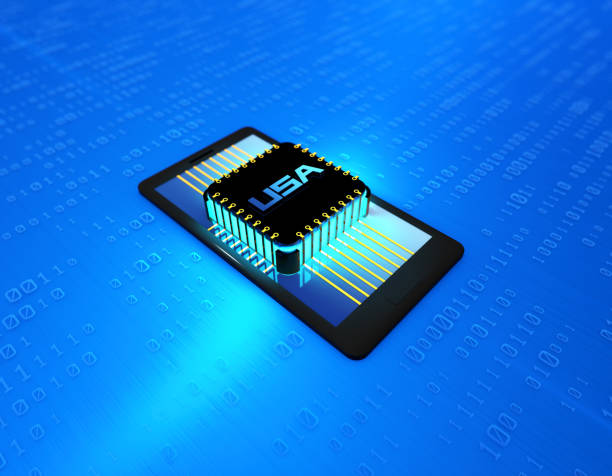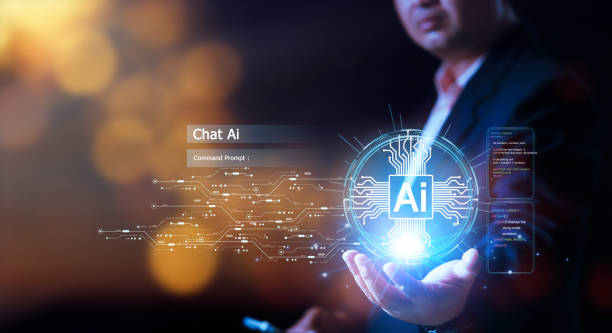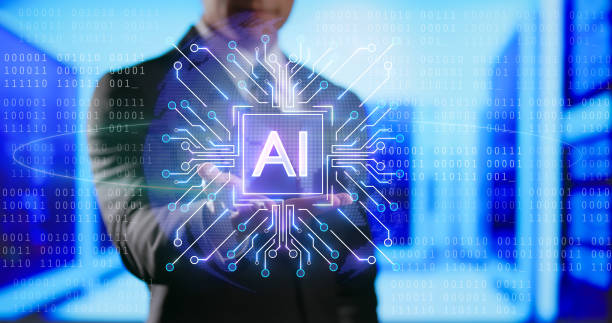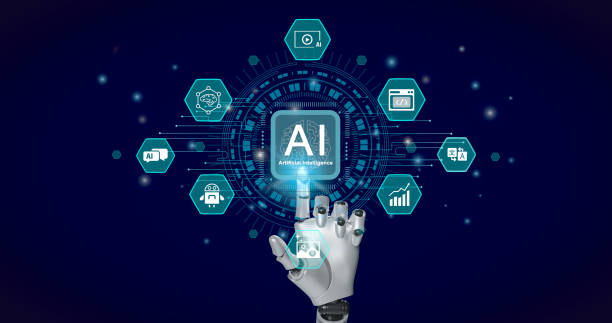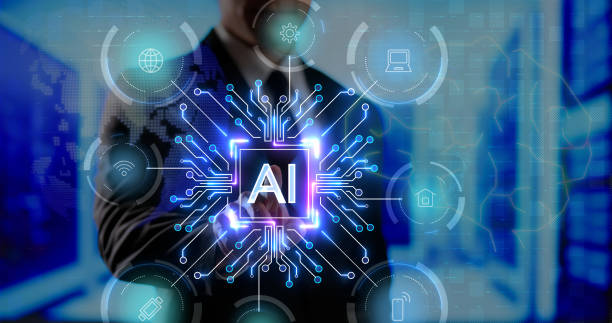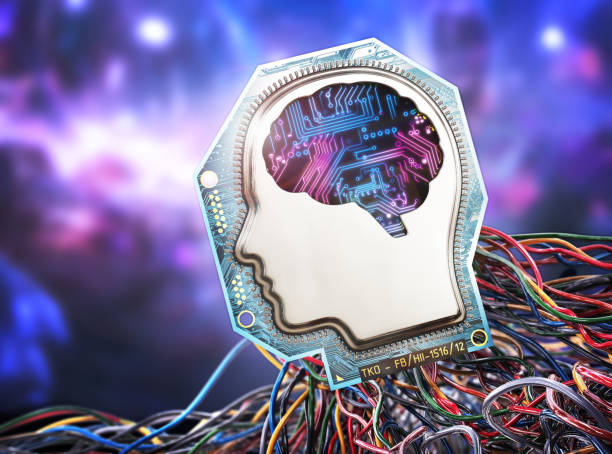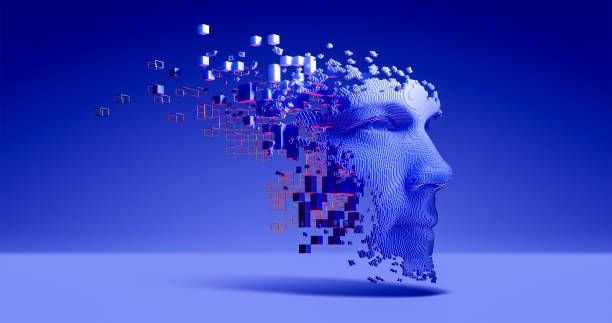Introduction to the Concept of AI Robots
Today, the term #Artificial_Intelligence (Artificial Intelligence) is widely heard in scientific circles, the media, and even in our daily lives.
But what exactly is an AI robot, and how is it different from regular robots? In its simplest definition, an AI robot is a machine or software agent that, using artificial intelligence algorithms, is capable of performing tasks that typically require human intelligence.
These tasks can include learning, reasoning, problem-solving, pattern recognition, natural language understanding, and even creativity.
The fundamental difference between an AI robot and traditional robots lies in the ability to learn and adapt to new conditions.
Traditional robots are usually programmed to perform a specific task and cannot improve their performance if conditions change.
While AI robots constantly learn and optimize their performance using their data and experiences.
AI robots use various artificial intelligence techniques, such as Machine Learning, Neural Networks, and Natural Language Processing, to perform their tasks.
For example, an AI robot designed to answer customer questions uses natural language processing to understand customer questions and machine learning to improve its answers over time.
In short, an AI robot is a representative of the combination of artificial intelligence and robotics that has the potential to create tremendous transformations in various industries and our lives.
Examining this phenomenon and understanding its capabilities is essential to facing a future based on new technologies.
Is your company’s website as professional and reliable as it should be? Create an online presence that reflects your credibility and attracts more customers with a specialized corporate website design by Rasaweb.
✅ Build a powerful and professional image of your brand
✅ Convert visitors into real customers
⚡ Get a free consultation right now!
Wide Applications of AI Robots
The applications of AI robots are very diverse and widespread and have affected almost all industries.
In the #Healthcare_industry, AI robots are used in diagnosing diseases, precise surgeries, caring for patients, and discovering new drugs.
For example, surgical robots can perform surgeries with much higher precision than human surgeons and reduce the risk of side effects.
Click here to preview your posts with PRO themes ››
In the #Manufacturing_industry, AI robots are used in production lines, quality control, warehousing, and logistics.
These robots can perform repetitive and dangerous tasks with greater speed and accuracy than human labor and reduce production costs.
In the #Customer_Service_industry, AI robots are used in the form of chatbots and virtual assistants to answer customer questions, provide technical support, and solve their problems.
These robots can be available 24 hours a day, 7 days a week, and help customers anytime, anywhere.
In addition, AI robots have many applications in #Education, #Transportation, #Finance, #Agriculture, and many other industries.
For example, in education, AI robots can act as private tutors for students and provide personalized educational programs.
In transportation, AI robots can guide self-driving cars and increase road safety.
In general, AI robots have the potential to improve productivity, reduce costs, increase safety, and provide better services in all industries.
With the increasing advancement of artificial intelligence technologies, it is expected that the applications of AI robots will become more extensive and complex in the future.
Advantages and Disadvantages of AI Robots
Like any other technology, AI robots have advantages and disadvantages that must be carefully considered.
The advantages of AI robots include increased productivity, reduced costs, increased safety, better service delivery, performing repetitive and dangerous tasks, and 24-hour operation.
For example, in the manufacturing industry, the use of AI robots can lead to increased production speed, reduced errors, and improved product quality.
The disadvantages of AI robots include high implementation costs, the need for technical expertise, the risk of job loss, ethical issues, and dependence on data.
For example, implementing an AI robot system in a factory may require a high initial investment and require training specialized personnel to maintain and repair the robots.
In addition, the widespread use of AI robots may lead to the loss of traditional jobs and raise ethical issues such as the accountability of robots in case of errors.
Click here to preview your posts with PRO themes ››
Also, AI robots are heavily dependent on data, and their performance quality depends on the quality of the data used to train them.
If the training data is biased, the AI robot may also be biased and make unfair decisions.
In general, a careful assessment of the advantages and disadvantages of AI robots and considering all ethical, social, and economic aspects is necessary for the responsible and sustainable use of this technology.
| Advantages | Descriptions |
|---|---|
| Increased Productivity | Performing tasks with greater speed and accuracy |
| Reduced Costs | Reducing human errors and optimizing energy consumption |
| Increased Safety | Performing dangerous tasks without risk to humans |
Challenges in Implementing AI Robots
Implementing AI robots faces numerous challenges.
One of the most important challenges is the #High_Cost_of_Implementation.
Developing and deploying AI robots requires significant investment in #Hardware, #Software, #Data, and #Technical_Expertise.
Especially for small and medium-sized organizations, this cost can be a major barrier to entry into this field.
Another challenge is the #Lack_of_Specialized_Personnel.
Developing and maintaining AI robots requires specialized knowledge and skills in areas such as #Machine_Learning, #Natural_Language_Processing, #Computer_Vision, and #Robotics.
Given the novelty of these fields, the number of skilled professionals in these areas is limited, and finding and hiring them can be difficult.
#Ethical_Issues are also another important challenge in implementing AI robots.
Decisions made by AI robots can have significant consequences for individuals and society.
For example, the decisions of an AI robot in the field of recruitment can lead to discrimination against certain groups of people.
Therefore, it is necessary to develop clear ethical principles for the development and use of AI robots and to create mechanisms to ensure compliance with these principles.
In addition, #Security_Issues should also be considered.
AI robots can be the target of cyber attacks and be hacked.
If an AI robot is hacked, attackers can take control of it and use it for malicious purposes.
Therefore, it is necessary to take appropriate security measures to protect AI robots from cyber attacks.
Are you tired of your company’s website not being seen as it should and losing potential customers? Solve this problem forever with professional and effective website design by Rasaweb!
✅ Increase brand credibility and build customer trust
✅ Attract targeted sales leads
⚡ Contact us now for a free consultation!
What will the Future of AI Robots be?
The future of AI robots is very bright and full of potential.
With the increasing advancement of artificial intelligence technologies, it is expected that AI robots will play a more important role in our lives in the future and create tremendous transformations in various industries.
One of the important trends in the future of AI robots is the #Increasing_Learning_Abilities and #Adaptability of them.
AI robots in the future will be able to continuously learn from their data and experiences and optimize their performance.
This will allow them to perform well in new and unexpected situations and perform more complex tasks.
Another trend is the #Expansion_of_Applications of AI robots in various industries.
AI robots in the future will have many applications in areas such as #Healthcare, #Education, #Transportation, #Manufacturing, #Financial_Services, and #Agriculture.
For example, in healthcare, AI robots can help doctors diagnose diseases, provide personalized treatments, and perform precise surgeries.
In education, AI robots can act as private tutors for students and provide educational programs tailored to their individual needs.
Also, #Human-Robot_Collaboration will become more important in the future.
AI robots in the future will act as human colleagues in the workplace and help them perform tasks.
This collaboration can lead to increased productivity, improved work quality, and the creation of new jobs.
In general, the future of AI robots is full of exciting opportunities and has the potential to create positive changes in our lives.
However, to fully exploit this potential, it is necessary to carefully examine the challenges related to the implementation of AI robots and provide appropriate solutions for them.
The Impact of AI Robots on Jobs
The impact of AI robots on #Jobs is a controversial topic.
On the one hand, some experts believe that AI robots can lead to #Job_Loss, especially in repetitive and routine jobs.
On the other hand, others believe that AI robots can #Create_New_Jobs and help #Improve_Work_Quality.
In fact, the impact of AI robots on jobs depends on the type of job and how AI robots are used.
Jobs that require low manual skills, repetitive tasks, and simple decision-making are more at risk of being replaced by AI robots.
For example, jobs such as telephone operators, production line workers, and truck drivers may face reduced demand in the future.
However, AI robots can also create new jobs.
The development, maintenance, and management of AI robots require skilled professionals in various fields.
In addition, AI robots can help humans perform complex and creative tasks, thereby improving work quality and increasing productivity.
For example, AI robots can help doctors diagnose diseases, engineers design new products, and artists create artwork.
To address the impact of AI robots on jobs, it is necessary for governments, organizations, and individuals to take appropriate action.
Governments should provide training and support programs to help people who lose their jobs.
Organizations should develop strategies for the responsible use of AI robots and train their employees in new skills.
Individuals should also keep their skills up to date and be prepared to learn new skills.
AI Robots and Privacy
One of the main concerns about AI robots is their impact on individuals’ #Privacy.
AI robots need to collect and process large amounts of data to perform their tasks.
This data can include individuals’ personal information such as name, address, telephone number, date of birth, medical records, financial information, and information about their online activities.
Collecting and processing this information can lead to a breach of individuals’ privacy.
For example, if an AI robot collects individuals’ personal information without their consent or uses this information for illegitimate purposes, their privacy has been violated.
Also, if individuals’ personal information is stolen or hacked, their privacy is at risk.
To protect individuals’ privacy from AI robots, appropriate action must be taken.
Governments should develop laws and regulations to regulate the collection and processing of personal information by AI robots.
Organizations should create policies and procedures to protect individuals’ personal information and train their employees on how to properly use this information.
Individuals should also be careful about their personal information and avoid sharing their sensitive information with AI robots.
In addition, developers of AI robots should strive to design robots that protect individuals’ privacy.
For example, they can use #Encryption and #Anonymization techniques to protect individuals’ personal information.
They should also create mechanisms to allow individuals to control their personal information and delete it from AI robot systems.
In general, protecting individuals’ privacy from AI robots requires the joint efforts of governments, organizations, individuals, and developers of AI robots.
AI Robots and Cyber Security
Today, AI robots play an important role in #Cyber_Security.
On the one hand, AI robots can be used to #Strengthen_Cyber_Security.
These robots can automatically identify and respond to cyber threats.
For example, AI robots can be used to detect malware, phishing attacks, and network intrusions.
Also, AI robots can be used to #Protect_Data and #Systems from cyber attacks.
On the other hand, AI robots can also pose a #Security_Threat.
Hackers can use AI robots to #Carry_Out_Cyber_Attacks.
For example, they can use AI robots to generate more sophisticated malware, conduct targeted phishing attacks, and break into security systems.
They can also use AI robots to #Collect_Personal_Information and #Destroy_Systems.
To counter cyber threats from AI robots, appropriate action must be taken.
Governments should develop laws and regulations to regulate the use of AI robots in the field of cyber security.
Organizations should develop strategies to identify and counter cyber attacks from AI robots.
Individuals should also be careful about their cyber security and use appropriate security software.
In addition, developers of AI robots should strive to design robots that are secure and resistant to cyber attacks.
For example, they can use #Reinforcement_Learning techniques to train robots to identify and counter cyber attacks.
They should also create mechanisms to identify and fix security vulnerabilities in AI robots.
| Field | Application of AI Robots |
|---|---|
| Threat Detection | Automatic identification of malware and attacks |
| Incident Response | Creating rapid responses to attacks |
| Vulnerability Analysis | Identifying and fixing vulnerabilities |
Tired of losing business opportunities because you don’t have a professional corporate website? Don’t worry anymore! With Rasaweb’s corporate website design services:
✅ Your brand’s credibility and professionalism will increase.
✅ You will attract more customers and sales leads.
⚡ Get a free consultation to get started!
AI Robot Accountability Who is Responsible?
One of the important ethical and legal challenges about AI robots is their #Accountability.
If an AI robot makes a mistake or causes damage, who is responsible? Is the robot’s developer responsible? Is the robot’s user responsible? Is the robot itself responsible?
Currently, there are no definitive and agreed-upon answers to these questions.
Some experts believe that the robot’s developer should be responsible for the damage caused by the robot’s errors.
They argue that the robot’s developer is responsible for the design, development, and testing of the robot and should ensure that the robot works correctly and is safe.
Some others believe that the robot’s user should be responsible for the damage caused by the robot’s errors.
They argue that the robot’s user is responsible for using the robot and should be aware of how the robot works and use it correctly.
Some others believe that the robot itself should be responsible for the damage caused by its own errors.
They argue that AI robots have independence and decision-making power and should be responsible for the consequences of their decisions.
It seems that none of these approaches is sufficient on its own.
AI robot accountability is a complex issue that requires careful consideration of all aspects.
It is necessary to develop a legal and ethical framework for determining the accountability of AI robots that takes into account the interests of all stakeholders.
In addition, it is necessary to create mechanisms to #Compensate_for_Damages caused by AI robot errors.
For example, #Insurance can be used to cover damages caused by robot errors.
How to Build an AI Robot?
Building an AI robot requires knowledge and skills in various fields.
The general steps to build an AI robot are as follows:
- Determine the Goal and Task of the Robot
The first step is to determine the goal and task that the robot must perform.
What problem should the robot solve? What need should it meet? - Data Collection
AI robots need data to learn and perform their tasks.
Depending on the type of task that the robot must perform, the appropriate data must be collected. - Select an Artificial Intelligence Algorithm
There are various artificial intelligence algorithms that can be used to build AI robots.
Choosing the appropriate algorithm depends on the type of task and the available data. - Train the Robot
After selecting the algorithm, the robot must be trained using the collected data.
In this step, the robot learns how to perform its task. - Evaluate the Performance of the Robot
After training, the robot’s performance should be evaluated.
Does the robot work correctly? Does it have any errors? - Improve the Performance of the Robot
If there are errors or poor performance, the robot’s performance should be improved.
This can be done by changing the algorithm, collecting more data, or adjusting the robot’s parameters. - Deploy the Robot
After ensuring that the robot is working correctly, it can be deployed and used to perform the desired task.
Building an AI robot requires knowledge and skills in fields such as #Programming, #Mathematics, #Statistics, and #Artificial_Intelligence.
Also, it is necessary to use appropriate tools and libraries to develop AI robots.
Some popular tools and libraries for developing AI robots include #Python, #TensorFlow, #Keras, and #PyTorch.
Frequently Asked Questions
| Question | Answer |
|---|---|
| What is an AI Robot? | It is a robot that uses artificial intelligence capabilities to understand the environment, reason, learn, and make decisions to perform complex tasks independently. |
| What is the main difference between a regular robot and an AI robot? | AI robots can learn and adapt to their environment, while regular robots typically operate based on fixed and pre-programmed plans. |
| In what areas are AI robots used? | In areas such as industry (production lines), medicine (robotic surgery), services (customer support, smart vacuum cleaners), exploration (space and underwater), and entertainment. |
| How do AI robots learn? | They acquire new skills through machine learning algorithms (Machine Learning) and deep learning (Deep Learning), by analyzing big data and identifying patterns. |
| Can AI robots have emotions? | Currently, no. They can identify or simulate emotions, but they do not have the actual experience of emotions like humans. |
| What are the most important benefits of using AI robots? | Increased productivity, reduced human error, performing dangerous or repetitive tasks, and providing new and efficient services. |
| What are the challenges in developing AI robots? | The need for large amounts of high-quality data, algorithm complexity, ethical issues, cyber security, and high research and development costs. |
| Are AI robots dangerous to humans? | No, if safe design principles and ethical regulations are followed. Concerns are more related to social and economic impacts, such as changes in the labor market. |
| What is an example of an AI robot in everyday life? | Smart vacuum cleaners (such as Roomba) that automatically map and clean the house, or smart voice assistants (such as Siri and Alexa). |
| How is the future of AI robots predicted? | They are expected to become smarter, more autonomous, and capable of more complex interactions with humans, and to play a more prominent role in industry, medicine, transportation, and everyday life. |
And other services of Rasa Web Advertising Agency in the field of advertising
Intelligent digital advertising: a professional solution to improve SEO ranking by focusing on Google Ads management.
Intelligent digital advertising: a new service to increase customer behavior analysis by optimizing key pages.
Intelligent UI/UX: A combination of creativity and technology for digital branding by precise audience targeting.
Intelligent customer journey map: Transform website visits by optimizing key pages.
Intelligent social media: Professional optimization to increase click-through rates using precise audience targeting.
And more than a hundred other services in the field of internet advertising, advertising consulting, and organizational solutions
Internet advertising | Advertising strategy | Advertorial
Resources
? To shine your business in the digital world, Rasaweb Afarin offers comprehensive digital marketing solutions, including custom website design, SEO optimization, and targeted advertising campaigns. With us, have a powerful and impactful presence online and smooth your path to success.
📍 Tehran, Mirdamad Street, next to the Central Bank, Kazerun Jonubi Alley, Ramin Alley No. 6
## ترجمة النص إلى العربية:
مقدمة إلى مفهوم روبوتات الذكاء الاصطناعي
اليوم، مصطلح #الذكاء_الاصطناعي يُسمع على نطاق واسع في الأوساط العلمية والإعلام وحتى في حياتنا اليومية.
ولكن ما هو روبوت الذكاء الاصطناعي بالضبط، وما الفرق بينه وبين الروبوتات العادية؟ في أبسط تعريف، روبوت الذكاء الاصطناعي هو آلة أو عامل برمجي قادر، باستخدام خوارزميات الذكاء الاصطناعي، على أداء المهام التي تتطلب عادةً ذكاءً بشريًا.
يمكن أن تتضمن هذه المهام التعلم والاستدلال وحل المشكلات والتعرف على الأنماط وفهم اللغة الطبيعية وحتى الإبداع.
يكمن الفرق الأساسي بين روبوت الذكاء الاصطناعي والروبوتات التقليدية في القدرة على التعلم والتكيف مع الظروف الجديدة.
عادةً ما تتم برمجة الروبوتات التقليدية لأداء مهمة معينة ولا يمكنها تحسين أدائها في حالة تغير الظروف.
بينما تتعلم روبوتات الذكاء الاصطناعي باستمرار وتحسن أدائها باستخدام بياناتها وخبراتها.
تستخدم روبوتات الذكاء الاصطناعي تقنيات الذكاء الاصطناعي المختلفة، مثل تعلم الآلة (Machine Learning) والشبكات العصبية (Neural Networks) ومعالجة اللغة الطبيعية (Natural Language Processing) لأداء مهامها.
على سبيل المثال، يستخدم روبوت الذكاء الاصطناعي المصمم للإجابة على أسئلة العملاء معالجة اللغة الطبيعية لفهم أسئلة العملاء وتعلم الآلة لتحسين إجاباته بمرور الوقت.
باختصار، روبوت الذكاء الاصطناعي هو ممثل لمزيج من الذكاء الاصطناعي والروبوتات لديه القدرة على إحداث تحولات هائلة في مختلف الصناعات وحياتنا.
يعد فحص هذه الظاهرة وفهم قدراتها أمرًا ضروريًا لمواجهة مستقبل قائم على التقنيات الجديدة.
هل موقع شركتك على الويب احترافي وموثوق كما ينبغي؟ أنشئ تواجدًا عبر الإنترنت يعكس مصداقيتك ويجذب المزيد من العملاء من خلال تصميم موقع ويب متخصص للشركات بواسطة رسـاوب.
✅ بناء صورة قوية ومهنية لعلامتك التجارية
✅ تحويل الزوار إلى عملاء حقيقيين
⚡ اح

